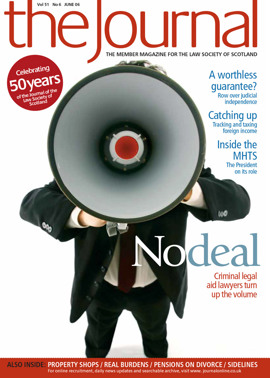Core of the agreement

The eagerly-anticipated judgment of Mann J in the long-running trade mark dispute between Apple Corps and Apple Computer was issued in early May. The case is interesting not just because of the parties, but also because the court had to interpret and give effect to a co-existence agreement entered into at a time when it could not have been anticipated that the musical and computer worlds would “Come Together” (!) so closely.
For almost 30 years there has been conflict between The Beatles’ Apple Corps and Apple Computer about both parties’ use of “Apple” and their respective logos. In 1991 in a trade mark agreement (“the agreement”), Computer essentially agreed not to enter the music distribution business. Conflict again arose with the advent of the iPod, which has been a major factor in the explosive success of digital music. Corps argued that Computer breached the agreement by using the Apple name and logo for its iTunes online music store.
In the agreement, Computer’s accepted area of use included providing “data transmission services”. Corps’ area included work whose principal content is music, regardless of the means by which those works are recorded, or communicated, and whether tangible or intangible. Although parties could not have foreseen the digital music revolution, clause 4.3 did recognise that these areas could converge and provided that Computer could use its mark “on or in connection with goods or services” within its data transmission service, but not “on or in connection with physical media delivery and pre-recorded content”.
The two principal questions were: (1) what was meant by use of a mark “on or in connection with” goods or services, and (2) was Computer’s use within clause 4.3 or beyond?
“On or in connection with”
Corps argued that on any normal interpretation, Computer’s use was in connection with musical content and so in breach of the agreement. Computer argued that the phrase meant use that indicated the source or origin of the rights to the music.
Whilst Corps accepted that Computer could use its mark as part of its iTunes software, Corps objected to its display before and after (but not during) the track being downloaded. Corps alleged Computer was acting like a record company – it had exclusive tracks available online, commissioned artists to record exclusive tracks and promoted itself as providing a one-stop “music solution”.
The judge noted that because the context of the agreement was the reservation of defined respective fields, the phrase had to be interpreted against that background. Taking a traditional view of the remit of a trade mark, he held that the phrase had to imply a trade connection or association with the origin of the music. Clause 4.3 recognised that as technology advanced, Computer might deliver musical content as part of its data transmission service. The iTunes website stated that Computer did not own any rights in the music. The judge ruled that Computer was not in breach of the agreement as it was using its mark for the purpose of a data transmission service, albeit that data happened to involve music.
CD or digital?
As the downloaded tracks could either be stored permanently on a computer’s hard drive or burned onto a CD, Corps argued that was tangible physical media, delivering pre-recorded content, all in breach of the agreement. The judge rejected this as a “serious distortion” of the accepted fact that digital downloads are different from compact disks. At a time when the music industry is bemoaning significantly reduced CD sales and is moving towards models of digital downloads, this view may not stand the test of time.
The consumer perspective
Mann J said that the issues had to be considered from the perspective of the “average consumer”. This was someone who would be familiar with download services and aware that buying recordings from a particular provider (or retail shop) did not give any association between the retailer and the origin of the music. Leave to appeal has been granted; whether this quite sophisticated approach will be followed remains to be seen.
The decision has been criticised particularly by US commentators as being a strict literal interpretation, based on UK trade mark law, that fails to recognise changes in the music industry. It has also been said that many consumers consider Computer as much a digital music company as a computer one. Given the potentially huge sums at stake, the appeal decision will be interesting.
In the meantime, given that advancing technology will inevitably result in more trade mark and IP disputes between parties previously content to co-exist, the decision is a helpful touchstone and shows the courts as willing to interpret agreements in their context, aiming to achieve practical working solutions.
Robert Buchan, Associate, IP & Technology Department, Maclay Murray & Spens
In this issue
- Independence first
- Stand up for our system
- The talking stops here
- The bill: a half measure
- Turning up the heat
- Strengthened or threatened?
- The patient approach
- Another little job
- The wars of the portals
- The LLP factor
- Avoiding surprises
- The temporary judge survives
- HMRC to the rescue
- Core of the agreement
- A debate to be resumed
- The impact of human rights
- Website reviews
- Book reviews
- Is that burden dead yet?






